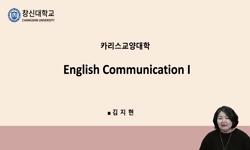최근 국립박물관의 접근성 개선 사업이 화두로 떠오르면서 전시 정보의 난이도는 좋은 전시의 평가기준 중 하나가 되었다. 이 글에서는 국립중앙박물관에서 도입한 쉬운 전시 정보의 제작...
http://chineseinput.net/에서 pinyin(병음)방식으로 중국어를 변환할 수 있습니다.
변환된 중국어를 복사하여 사용하시면 됩니다.
- 中文 을 입력하시려면 zhongwen을 입력하시고 space를누르시면됩니다.
- 北京 을 입력하시려면 beijing을 입력하시고 space를 누르시면 됩니다.
https://www.riss.kr/link?id=A109563833
- 저자
- 발행기관
- 학술지명
- 권호사항
-
발행연도
2024
-
작성언어
Korean
- 주제어
-
KDC
605
-
자료형태
학술저널
-
수록면
40-61(22쪽)
- DOI식별코드
- 제공처
-
0
상세조회 -
0
다운로드
부가정보
국문 초록 (Abstract)
최근 국립박물관의 접근성 개선 사업이 화두로 떠오르면서 전시 정보의 난이도는 좋은 전시의 평가기준 중 하나가 되었다. 이 글에서는 국립중앙박물관에서 도입한 쉬운 전시 정보의 제작과 활용 방식에 대해 살펴보고, 향후 지속 가능성과 방향성에 대해 생각해 보고자 한다.<BR/> 쉬운 전시에 대한 열망은 접근성 개선 사업 이전에 이미 관람객뿐만 아니라 전시를 만드는 박물관 학예연구사들 사이에서 찾아볼 수 있었다. 장애인 관련 법적 제도 정비에 따라 발달장애인의 정보 접근 권리를 보장하는 읽기 쉬운 자료의 사용이 법적으로 의무화되었다. 이에 발맞추어 박물관의 접근성 개선사업도 박물관의 공간과 시설에 대한 물리적·감각적 접근성 개선에서, 박물관이 제공하는 모든 정보에 대한 지적·정서적 접근성 개선으로 변화하고 있다. 예를 들어, 국립중앙박물관의 접근성 개선 사업도 지체 및 감각 장애인을 위한 점자 안내, 수어 영상, 촉각 전시품 등의 콘텐츠 개발에서, 발달장애인을 위한 읽기 쉬운 자료를 활용한 쉬운 전시 정보 활용으로 눈을 돌리고 있다. 현재로서는 제한된 위치에서 선별적 대상에 한해 쉬운 전시 정보를 제공하고 있어, 전시실 안에서 쉬운 전시 정보를 사용하는 이와 그렇지 않은 이를 구분하여 새로운 차별이 발생할 우려도 있다. 한편 학술적 연구 성과를 기반으로 하는 박물관 전시의 성격상, 전시 정보가 전시 기획자로부터 관람객에게 일방적으로 주입되어 전시 기획자와 관람객 사이의 소통이 이루어지지 않을 수 있다. 이러한 점에서 국립중앙박물관이 시도한 특별전 〈스투파의 숲, 신비로운 인도이야기〉의 전면적 쉬운 전시 정보 제공은 중요한 의미를 가진다. 누구나 쉽고 재밌게 즐길 수 있는 이야기가 있는 전시를 누구나 쉽게 이해할 수 있는 말로 전달하기 위해 모든 전시글을 쉬운 전시 정보로 변화하는 과정과 실제 사례 분석을 통해 주의할 점을 파악할 수 있었다. 또한 누구도 차별하지 않고 공공기관의 객관성을 유지할 수 있는 쉬운 전시 정보를 만들기 위해서는 전시를 둘러싼 다양한 관계자들의 활발한 소통이 필요한 것을 확인할 수 있었다. 모두를 위한 쉬운 전시 정보는 전시를 둘러싼 모든 이들의 소통이 확장될 때 비로소 가능해질 것이다.
다국어 초록 (Multilingual Abstract)
The recent rise in interest toward accessibility improvement initiatives by national museums has highlighted the complexity of exhibition information as a key criterion for evaluating high-quality exhibitions. In this context, this paper explores the ...
The recent rise in interest toward accessibility improvement initiatives by national museums has highlighted the complexity of exhibition information as a key criterion for evaluating high-quality exhibitions. In this context, this paper explores the creation and application of easy-to-understand exhibition information implemented by the National Museum of Korea, while also examining its sustainability and future direction.<BR/> Even before the recent accessibility improvement initiatives, the desire for easy-to-understand exhibitions was evident not only among visitors but also among museum curators responsible for organizing exhibitions. With the refinement of legal frameworks for individuals with disabilities, a legal mandate was introduced requiring the use of easy-to-read materials to ensure information access rights for people with developmental disabilities. In response, museums have shifted their accessibility improvement efforts from focusing primarily on physical and sensory accessibility in spaces and facilities to enhancing intellectual and emotional accessibility across all information provided by museums. For example, the accessibility improvement initiatives at the National Museum of Korea have evolved from developing resources for individuals with physical or sensory disabilities, such as Braille guides, sign language videos, and tactile exhibition objects, to providing clearer and more straightforward exhibition information using easy-to-read materials designed for individuals with developmental disabilities.<BR/> However, at present, easy-to-understand exhibition information is offered only in limited locations for a select user base, raising potential concerns about new forms of discrimination within exhibition spaces between those who have access to such information and those who do not. Furthermore, due to the academic nature of museum exhibitions, which are grounded in scholarly research outcomes, exhibition information is often unilaterally delivered by curators to visitors and can result in a lack of communication between the two. To address these issues, the National Museum of Korea made an all- out effort to provide comprehensive, unrestricted and easy-to-understand exhibition information during its December 2023 special exhibition titled Tree and Serpent, Early Buddhist Art in India. Creating easy- to-understand exhibition information that conveys engaging exhibition narratives in clear and accessible language for all, while upholding the objectivity of a public institution and ensuring inclusivity without discrimination for all, required constant communication among the various stakeholders involved in the exhibition. This effort demonstrated that easy-to-understand exhibition information for all visitors is achievable through the expansion of communication among all participants in the exhibition process.
동일학술지(권/호) 다른 논문
-
〈조라포남봉관해도(助羅浦南峯觀海圖)〉를 통해 본 16세기 후반 조선의 해방정책(海防政策)
- 국립중앙박물관
- 이효종(李孝鍾)
- 2024
-
국립중앙박물관 국외전시의 경향 분석: 용산시기를 중심으로
- 국립중앙박물관
- 선유이(宣柔伊)
- 2024
-
- 국립중앙박물관
- 편집부(편집자)
- 2024
-
감각과 정보 경험 구조화를 통한 문화취약계층 전시 접근성 향상 방안 연구—국립중앙박물관 촉지 기반 접근성 콘텐츠를 중심으로
- 국립중앙박물관
- 장은정(張恩晶)
- 2024
분석정보
연관 공개강의(KOCW)
-

Communication: Early Language
Teachers TV Teachers TV -

English Communication II
창신대학교 김지현 -

Developing Communication for Language and Thinking
Teachers TV Teachers TV -

How to Improve Your English Communication Skills: Speaking, Vocabulary and Grammar
한서대학교 Shaneil Dipasupil -

English Communication I
창신대학교 김지현




 DBpia
DBpia

